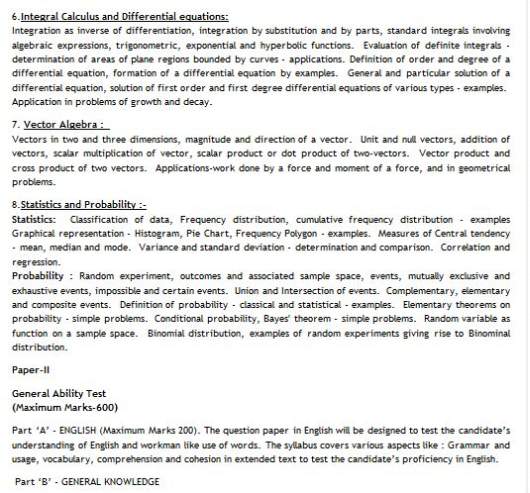| Re: After completing 3 years Diploma course in Information Technology can I join Indi
After diploma it may difficult for you to join Indian Army
To join Indian Army you have to clear CDS exam and for that minimum qualification is graduation degree
So firstly complete your graduation degree than you can apply for it
Union Public Service Commission (UPSC) conducts Combined Defence Services (CDS) Examination
Eligibility for CDS exam:
Must have passed graduation Degree from recognized university or equivalent
Age limit:
19-24 years
CDS Syllabus
PAPER – 1: ENGLISH:
The question paper will be designed to test the candidates’ understanding of English and workmanlike use of words.
PAPER – 2: GENERAL KNOWLEDGE:
General Knowledge including knowledge of current events and of such matters of everyday observation and experience in their scientific aspects as may be expected of an educated person who has not made a special study of any scientific subject. The Paper will also include questions on History of India and Geography of a nature which Candidate should be able to answer without special study.
PAPER – 3: ELEMENTARY MATHEMATICS:
Arithmetic:Number System-Natural numbers, Integers, Rational and Real numbers. Fundamental Operations addition, subtraction, multiplication, division, Square roots, Decimal, fractions. Unitary method, time and distance, time and work, percentages, applications to simple and compound interest, profit and loss, ratio and proportion, variation.
Elementary Number Theory- Division algorithm. Prime and composite numbers. Tests of divisibility by 2, 3,4,5,9 and 11. Multiples and factors. Factorisation Theorem. H.C.F. and L.C.M. Euclidean algorithm, Logarithms to base 10, laws of logarithms, use of logarithmic tables.
ALGEBRA
Basic Operations, simple factors, Remainder Theorem, H.C.F., L.C.M. Theory of polynomials, Solutions of quadratic equations, relation between its roots and coefficients (Only real roots to be considered). Simultaneous linear equations in two unknowns-analytical and graphical solutions. Simultaneous linear in equations in two variables and their solutions. Practical problems leading to two simultaneous linear equations or in equations in two Variables or quadratic equations in one variable & their solutions. Set language and set notation, rational expressions and conditional identities, Laws of indices.
TRIGONOMETRY
Sine x, cosine x, Tangent x when 0 <x < 90 Values of sin x, cos x and tan x, for x = 0, 30, 45, 60 and 90
Simple trigonometric identities.
Use of trigonometric tables.
Simple cases of heights and distances.
GEOMETRY
Lines and angles, Plane and plane figures, Theorems on (i) Properties of angles at a Point(ii) Parallel lines, (iii) Sides and angles of a triangle, (iv) Congruency of triangles, (v) Similar triangles, (vi) Concurrence of medians and altitudes, (vii) Properties of angles, sides and diagonals of a parallelogram, rectangle and square (viii) Circles and its properties including tangents and normal, (ix) Loci.
MENSURATION
Areas of squares, rectangles, parallelograms, triangle and circle. Areas of figures which Can be split up into these figures (Field Book), Surface area and volume of cuboids, lateral surface and volume of right circular cones and cylinders, surface area and Volume of spheres.
STATISTICS
Collection and tabulation of statistical data, Graphical representation, frequency Polygons, histograms, bar charts, pie charts etc. Measures of central tendency.
|

